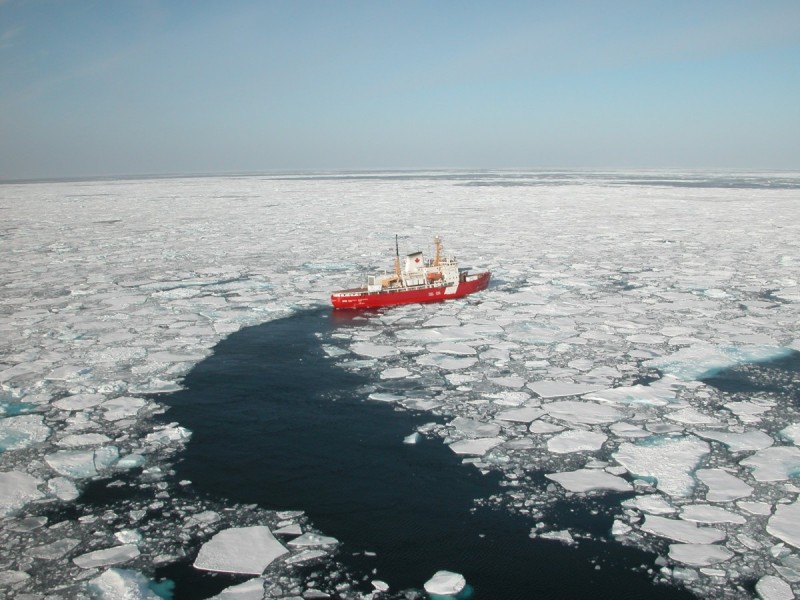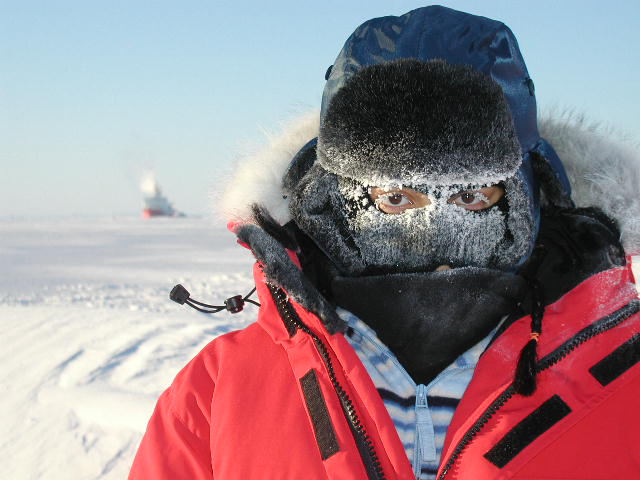Arctic research gets transformed
Arctic explorers and scientists have a new home: the Nellie Cournoyea Arctic Research Facility, a transformational institute in the University of Manitoba’s Clayton H. Riddell Faculty of Environment, Earth, and Resources.
University of Manitoba President David Barnard welcomed the Faculty’s namesake, Dr. Clayton H. Riddell, Nellie Cournoyea, the Honourable Erin Selby, Minister of Advanced Education and Literacy, Minister Responsible for International Education, as well as scientists, students and community members.
Construction on the innovative $15-million facility began two years ago after Dr. Clayton H. Riddell donated $2.5 million towards it. His visionary donation coincided with the University of Manitoba being awarded a Canada Excellence Research Chair (CERC) in Arctic Geomicrobiology and Climate Change from the federal government. To help support such research, the Province of Manitoba also contributed funding to the U of M’s CERC program.
“Our alumni are extraordinary people who transform the world with their talents and generosity, and we are proud and grateful that distinguished graduates such as Dr. Riddell continually offer unwavering support to the University and its mission,” says Dr. David Barnard, President and Vice-Chancellor of the University of Manitoba. “We are world leaders in Arctic climate change research thanks to the generous support of Dr. Riddell.”
In December of 1945 a Winnipeg Tribune editorial argued that Manitoba should be home to an Institute of Arctic Research, and today that became a reality.
The Wallace Building, the faculty’s home, is now five storeys as a floor was added to house the 60,000-square-feet of specialized laboratories, state-of-the-art instruments, and classrooms in the Nellie Cournoyea Arctic Research Facility. This space accommodates the influx of graduate students and researchers coming to the University as a result of the Canada Excellence Research Chair, held by Søren Rysgaard.
In addition to the new chair and the 17 University of Manitoba researchers already involved in sea ice research, the University has invested in three new tenure track faculty positions, post-doctoral and research associate positions, graduate students and support staff. The Faculty’s Centre for Earth Observation Science (CEOS) has more than doubled in size to over 100 people.
The Nellie Cournoyea Arctic Research Facility is named after Nellie Cournoyea, an Officer of the Order of Canada and recipient of the National Aboriginal Achievement Award and Governor General’s Northern Medal Award. She was the first female premier of a Canadian territory; she was the leader of the Northwest Territories from 1991 to 1995. Nellie served 16 years as Chair and Executive Officer of the Inuvialuit Regional Corporation, and currently remains a member of its Executive Committee.
 The University of Manitoba is home to the most well-funded sea ice research team in the world. In addition to the $10-million CERC investment, the University and its partners contributed $25 million. The total investment of over $35 million supports U of M’s trailblazing Arctic research team, the leading thinkers and explorers of Earth’s harshest and most delicate environment.
The University of Manitoba is home to the most well-funded sea ice research team in the world. In addition to the $10-million CERC investment, the University and its partners contributed $25 million. The total investment of over $35 million supports U of M’s trailblazing Arctic research team, the leading thinkers and explorers of Earth’s harshest and most delicate environment.
“The Earth is our home. It is appropriate that we do some maintenance on our home. While the North in general, and the Arctic in particular, may seem far away, it is important to understand we in Canada are all intimately connected with those regions through resource development, climate change, and our people,” says Norman Halden, Dean of the Clayton H. Riddell Faculty of Environment, Earth and Resources. “This critical investment in Arctic research comes at a time of unprecedented global change. As researchers we must rise to challenge the real problems that affect our home and our societies. This world-class platform will be the stage on which this work is done.”
Clayton Riddell [BSc(Hons)/59, DSc/04] is a distinguished geological sciences graduate of the University of Manitoba, and a long-time friend and supporter of his alma mater. Dr. Riddell advised the University of Manitoba during the $237-million Building on Strengths capital campaign and took a leadership role in supporting the construction of the Ed Leith Cretaceous Menagerie. In 2004, the University of Manitoba awarded Riddell an honorary Doctor of Science degree in recognition of his distinguished career and service to the community.
VIDEO:
For media interested in using footage taken from the Arctic right click and save the following:
http://umanitoba.ca/admin/public_affairs/videos/arctic_footage_1.mp4
http://umanitoba.ca/admin/public_affairs/videos/arctic_footage_2.mp4
Dr. David Barber, director of the Centre for Earth Observation Science (CEOS), explains how the addition of Dr. Søren Rysgaard, Canada Excellence Research Chair (CERC) in Arctic Geomicrobiology and Climate Change, will elevate the University of Manitoba’s status as a climate change research institute.
Dr. Søren Rysgaard, explains his research and his new collaborations.
Visionary Conversation on climate change, a topic explored by U of M researchers at a though-provoking event.
Dr. David Barber explains some findings his research team discovered while working in the Arctic
Dr. David Barber’s interview with CBC’s Peter Mansbridge.
For more information contact Sean Moore, Marketing Communications Office, University of Manitoba, 204-474-7963 (sean_moore [at] umanitoba [dot] ca).
Research at the University of Manitoba is partially supported by funding from the Government of Canada Research Support Fund.







